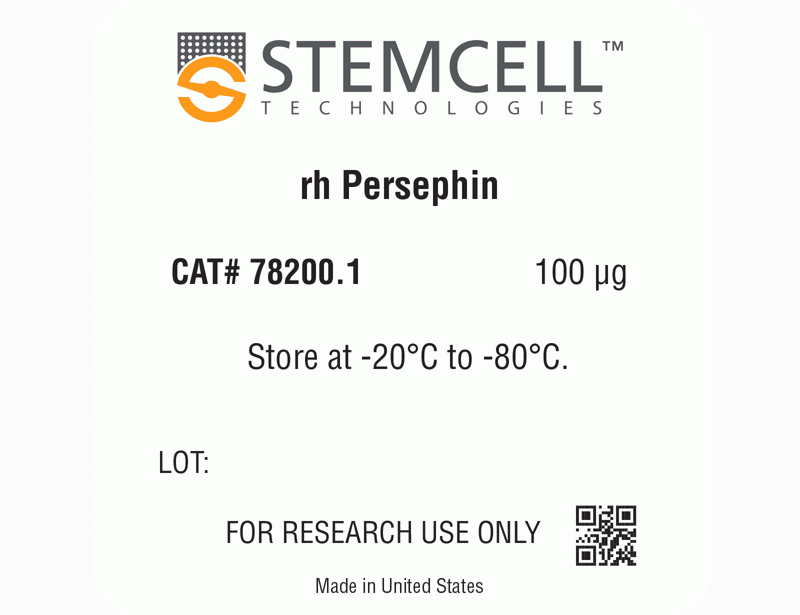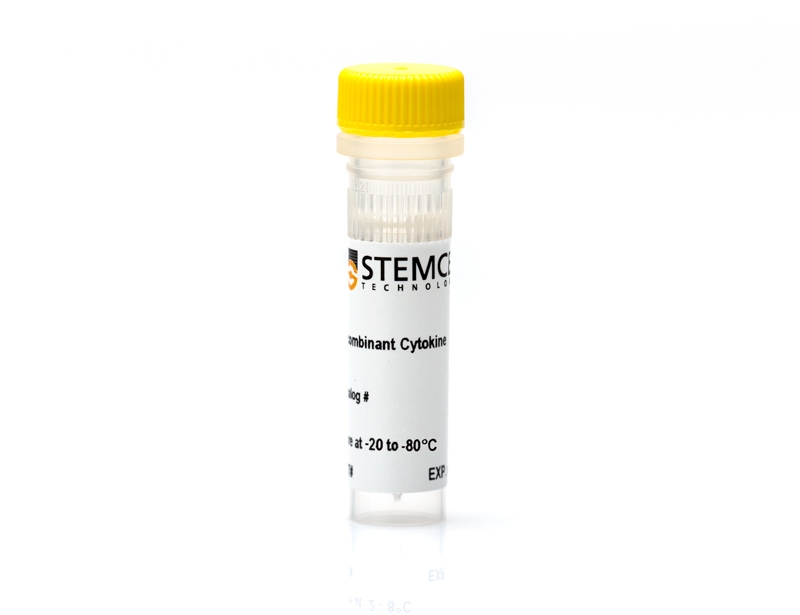Human Recombinant Persephin
Persephin
概要
Persephin is a neurotrophic factor that belongs to the glial cell line-derived neurotrophic factor (GDNF) family. Persephin shares a large degree of structural similarity to GDNF, artemin, and neurturin, and has overall neuroprotective activity. Persephin signals through GRFα4 (glycosylphosphatidylinositol (GPI)-linked GDNF receptor family member) which signals through the receptor tyrosine kinase RET. Unlike GDNF and neurturin, persephin only promotes the growth and survival of central dopaminergic and motor neurons, but not peripheral neurons (Milbrandt et al.). In vitro, persephin only promotes survival of neurons that co-express GPI-linked GRFα4 and RET (Enokido et al.; Lindahl et al.). Mice lacking persephin showed increased cell death after cerebral ischemia, however administration of persephin before ischemia dramatically reduced neuronal cell death (Tomac et al.).
Subtype
Cytokines
Alternative Names
PSP, PSPN
Cell Type
Neurons
Species
Human
Area of Interest
Neuroscience
Molecular Weight
10.4 kDa monomer; 20.8 kDa dimer
Purity
≥ 95%
技术资料
| Document Type | 产品名称 | Catalog # | Lot # | 语言 |
|---|---|---|---|---|
| Product Information Sheet | Human Recombinant Persephin | 78200, 78200.1 | All | English |
| Safety Data Sheet | Human Recombinant Persephin | 78200, 78200.1 | All | English |
数据及文献
Data

(A) The biological activity of Human Recombinant Persephin was tested by its ability to promote the proliferation of TT cells. Cell proliferation was measured using a fluorometric assay method. The EC50 is defined as the effective concentration of the neurotrophic factor at which cell proliferation is at 50% of maximum. The EC50 in the example above is 2.27 ng/mL. (B) 1 μg of Human Recombinant Persephin was resolved with SDS-PAGE under reducing (+) and non-reducing (-) conditions and visualized by Coomassie Blue staining. Human Recombinant Persephin has a predicted molecular mass of 20.8 kDa (10.4 kDa per monomer).



